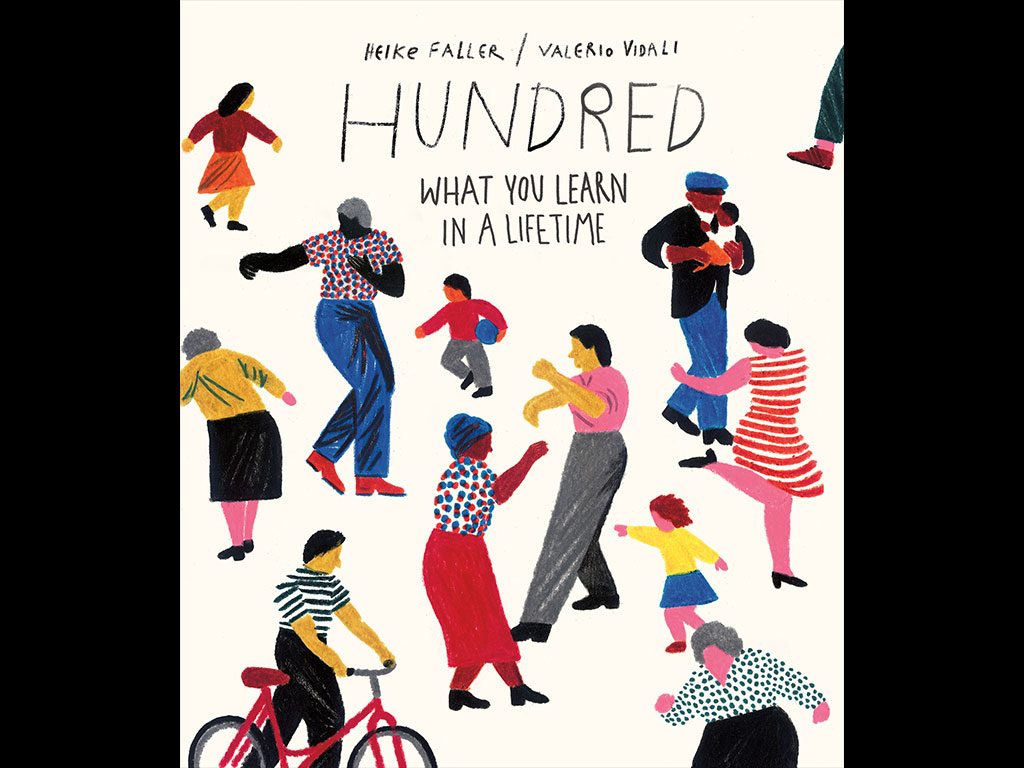
A first smile, kiss, true love. The breakthroughs that come with age and experience. The realizations we have about ourselves and the world as the number of candles on your cake creeps up. There is so much to learn.
Paired with beautiful illustrations by award-winning artist Valerio Vidali, Hundred charts the course of a lifetime, year by year, elegantly pinpointing the little things that together make up a whole life.
Tell us what inspired you to create this book.
The birth of a little baby that happened to be one of my nieces. I saw her lying there, just a couple of days old, and I thought: Wow, you’ve so much ahead of you, so much to learn. Good things and bad things. Half I envied her, and half I wanted to protect her. So, I started writing a poem for her about all the things she would learn, year by year. And then I stopped, thinking it might be an illustrated book, which I could give to her one day. Now she is seven-and-a-half and keeps quizzing her older sister what’s on which page.
You chose wonderful things—a first kiss, a dream coming true—and difficult things—fear and mortality—as things we’ll learn in a lifetime. Were you tempted to only write about ‘good’ things?
Not at all. After all, the difficult lessons are so obviously part of life that they would’ve been hard to overlook. The challenge was more to find the really difficult lessons and not just the ones that are difficult in a cute, safe, kid-friendly kind of way, like someone facing their fear of the dark and being courageous. I wanted to name the real difficulties, the real sadnesses in life. I also did this because I thought kids want to know. Whenever families talk about the really tough things in life—illness, divorce, loss, anger—there’ll be a kid sitting quietly in the corner and listening intently until some adult notices and tells them to go to bed.
The artwork is essential to this book. What was the process like working with illustrator Valerio Vidali?
At first, he illustrated maybe 60 sentences. I liked his illustrations immediately because they speak to adults and kids alike. Sometimes I changed the sentences to fit better with the image, sometimes he changed the image. Also, he contributed his own topics. At the end, when we had about 40 pages left we discussed which life lessons and images to put in the book because the book not only needed the right life lessons at the right age, but a visual rhythm, too.
You had the chance to ask a diverse group of people what they’ve learned in life so far. What have you learned in your life?
Last winter I learned to ski in deep snow, which was something I’ve always wanted to do. I think the most important lesson in the last couple of years was—typical for someone in their 40s—to get a concrete sense of your own mortality and then start living in the present more. Do the things you want to do instead of just talking about them. And I think I’ve gotten better at discussing conflicts instead of ducking away.
What would you like readers to take away from this book?
The feeling that no matter how different our lives seem, we actually go through very similar life experiences.











